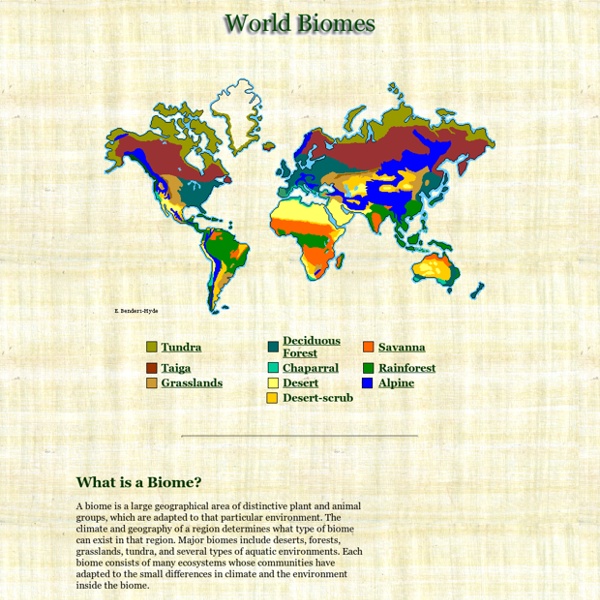Boy finds 10,000-year-old arrowhead on New Jersey beach
Noah Cordle, 10, found a 10,000-year-old Paleoindian arrow point on a New Jersey beach.Kelly-Jane Cotter/ Asbury Park Press BEACH HAVEN, N.J. – A boy playing on a New Jersey beach has unearthed a 10,000-year-old arrowhead possibly used by ancient Native Americans to spear fish or hunt mastodon. Noah Cordle, 10, and his family were vacationing on the Long Beach Island last week when he found it at the edge of the surf in the community of Beach Haven. It was sharp enough that it hurt as it hit his leg.
KDE Santa Barbara
Welcome to the Kids Do Ecology Biomes Pages! Aquatic Biomes | Terrestrial Biomes | GAMES! What are biomes? Biomes are regions of the world with similar climate (weather, temperature) animals and plants.
Before Civilization - Ancient Civilizations for Kids
Early humans showed another major sign of intelligence about 35,000 years ago. Humans began to draw on the walls of caves—probably other places too, but it has been preserved in caves. Cave paintings often depict hunting scenes. This is some of the first artwork and also an early attempt at written communication. Development of Agriculture The most important development in human history is the development agriculture, which is another word for farming.
Biomes of the World
Biomes are the major regional groupings of plants and animals discernible at a global scale. Their distribution patterns are strongly correlated with regional climate patterns and identified according to the climax vegetation type. However, a biome is composed not only of the climax vegetation, but also of associated successional communities, persistent subclimax communities, fauna, and soils. The biome concept embraces the idea of community, of interaction among vegetation, animal populations, and soil. A biome (also called a biotic area) may be defined as a major region of distinctive plant and animal groups well adapted to the physical environment of its distribution area.
Ancient Man Had Neanderthal Great-Great Grandfather
A modern human who lived in what is now Romania between 37,000 and 42,000 years ago had at least one Neanderthal ancestor as little as four generations back—which is to say, a great-great-grandparent. Scientists have known for at least half a decade that living humans bear traces of Neanderthal blood—or more specifically, Neanderthal DNA. Just when and where our ancestors bred with their now-extinct cousins, however, has been tricky to pin down until now.
Science for Kids: World Biomes and Ecosystems
What is an ecosystem? Each individual plant and animal could not exist by itself on planet Earth. All living organisms need millions of other living organisms to survive.
Ask a Biologist: Biomes of the World
What's a Biome? Here we see two different biomes—deserts on the left and grasslands on the right. But both are land environments.



